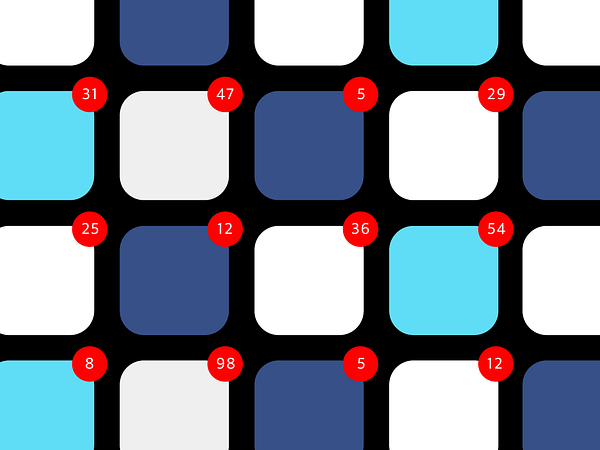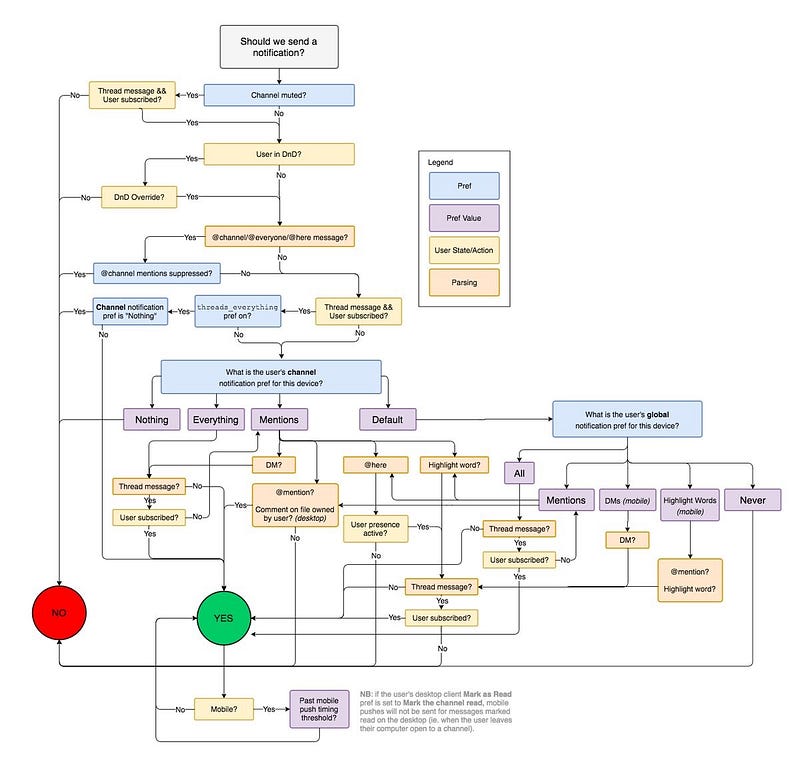Notifications: A Tragedy Of the Digital Commons – Positive Slope – Medium

The smartphone was born alongside the era of apps. Functionality was app-specific and took place within an isolated interface. There was no GPS in the early days. There was no real-time video (broadband didn’t support it), and communication was asynchronous and still largely done via SMS, email, or old fashioned phone calls.
Of course, today’s mobile devices are entirely different — they know where we are, they connect us in real-time, and the applications have evolved accordingly. The apps have advanced beyond their mobile operating systems. To accomodate, iOS and Android have tried to surface the always-on, hyper intelligent activity within applications in very unintelligent ways. We got badges on icons, auto-updating, and ultimately notifications.

Ahh, notifications. When they first came out, app developers rejoiced at the prospects of engaging their users outside of the app, anytime they wanted to. But we were left with a noisy, random, and border-line abusive user experience where notifications have become a tactic to steal our attention rather than enhance our lives. The fact that notifications are an unsustainable “hack” is becoming increasingly clear. The most effective mobile notifications are finance related, fear related, or have some degree of FOMO (fear of missing out) in them. As such, companies are playing games to get us to pay attention.
It’s a classic tragedy of the commons, “a situation within a shared-resource system where individual users acting independently according to their own self-interest behave contrary to the common good of all users by depleting or spoiling that resource through their collective action.” The “individual users” in this instance are the app developers who, acting in their own self-interest, push notifications to engage us, thus spoiling the potential of the “commons” — the ambient home screen, notifications, and out-of-app state of your device.
The surplus of notifications — and a few bad actors — spoiled the channel for everyone. Right now, all apps are incentivized to throw as many different kinds of notifications our way to stand out amidst every other app’s notifications. Speaking to one founder the other day, he told me “it turns out notifications with emoji perform over 20% better.” And I knew it was just a matter of time before most notifications included emoji. Not sustainable. How do we move past an app-centric world when the interface beyond the apps is under attack?
Long-Term Solution: An Intelligent “Notification Layer” API
As I work with different mobile application teams, from dozens of start-up teams to later stage products like Periscope/Twitter and Pinterest, Behance, Adobe, and the Prefer team, it‘s’ clear that notifications would make life and work better if they were smarter. Here’s an idea, and any team at Apple, Google, or in an apartment or garage somewhere is welcome to run with it: Create a single notification management service that all apps could use (or be required to use) to send notifications to its users – let’s call it the “Notification Layer API.”
The Notification Layer API would take all kinds of data into account, like your location, your schedule, your propensity to engage with certain apps at certain times, and your historical “conversion” on similar notifications in the past. The system would also optimize default notification preferences for users based on what other users do. For example, if people like you engage with a particular app’s notifications at a particular time or location, then you would get them. But apps that throw superfluous and ignored notifications at their users would become filtered out. Most users wouldn’t even see them.
Consider the implications:
- Notifications are respectful and clever. When your calendar says you’re in a meeting, you’ll never receive a notification unless it is urgent. No more news alerts about Trump or prompts to join friends on Houseparty. But, when your accelerometer knows you’re in the back of an Uber, you get a stream of news alerts, prompts to make your next move in Scrabble, and invites to watch live streams.
- Notifications are optimized by AI. If a user doesn’t engage with a certain app’s notifications, then not only do they see them less but other users see them less as well. The system learns and applies notification preferences and desires much like Spotify triangulates your music taste or Stitchfix understands your fashion based on other users’ actions. The system gradually becomes intelligent, ensuring increasingly relevant notifications for everyone.
The Notification Layer API would flip the model, incentivizing app developers to push only the most actionable, well-timed, and value-add notifications in pursuit of premium attention for their products. The “commons” would become richer and more fertile. Over time, iOS and Android could evolve to provide better real-estate (think animated notifications and full-screen take-over notifications rather than small bits of text), so long as the quality is there and the commons is respected rather than polluted.
Near-Term Solution: Better Notification Logic
For companies that make apps: taking the time and care to get notifications right can become a powerful moat. Live video companies (whether you’re Periscope, Houseparty, or a premium “post cable network” live broadcaster like Cheddar) must innovate on when and how they notify users of events. A simple logic model will not suffice. Case in point, Slack’s logic map for whether or not to send a customer a notification (see below). Damn impressive.

More and more people are starting to adjust or turn-off notifications app by app. As such, your team needs to be innovating your notification system itself, if only to keep users receiving notifications in the first place. Of course, the near-term solution of every app iterating their own notification system is a bad one because smarter notifications will still be lost amidst a sea of thoughtless ones. A tragedy of the commons is not solved until self-interests are flipped or rules are put in place.
Ultimately, the logic for notifications must be determined by artificial intelligence and factors like relevance, urgency, location, and relationships. The best solution is for the mobile operating systems themselves to provide a Notification Layer API that all apps must comply with, or perhaps we are overdue for a new mobile operating system designed for a world where your location and desires matter more than which apps you have installed on your phone.
